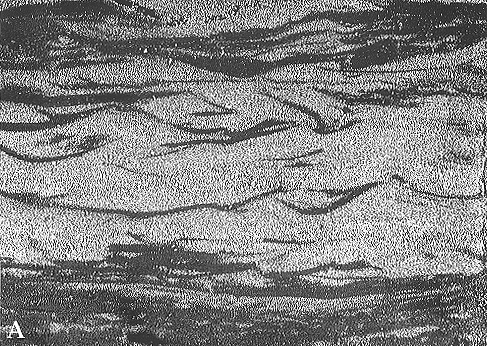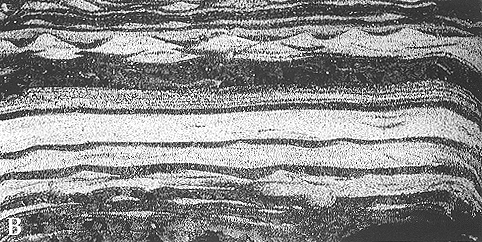

Heterolithic bedding: flaser and wavy types
Plate 61


Heterolithic bedding: flaser and wavy types
Plate 61
A flaser is a thin lens of mud embedded in sand, with a concave-up curvature reflecting its being the remnant of a mud bed draping ripple troughs. The mud was eroded from ripple crests, which led to amalgamation of several sand beds (see Introduction, figures 8C and 9); amalgamation can go undetected if sand composition and texture do not change from one bed to another, and flasers are not preserved.
In 61 A, flaser bedding predominates in the central sand body, passing to lenticular bedding both upwards and downwards. In B, you see an alternation of all three types of heterolithic bedding. Both photographs were taken in trenches dug in North Sea tidal flats.
Larger-scale flasers are found on dune troughs like those shown in plates 28 and 29. Fossil examples of small- and medium-scale flaser bedding are shown in color photo 18, in an outcrop of a classical European formation, the Swiss Molasse near Fribourg. This sandy unit was deposited in shallow water influenced by tidal motion, on the bottom of a Miocene seaway bordering the newly emerged Alps chain. The depositional basin was an asymmetrically subsiding, elongate trough, called a foreland basin, which received its clastic supply from erosion of the Alps. The Alpine chain was built up, from the Cretaceous to the Oligocene, by the collision of Europe and Africa, which destroyed the interposed oceanic crust of the western Tethys and deformed the margins of the two continents, including many sedimentary successions.
| Photos: H. E. Reineck 1970. |